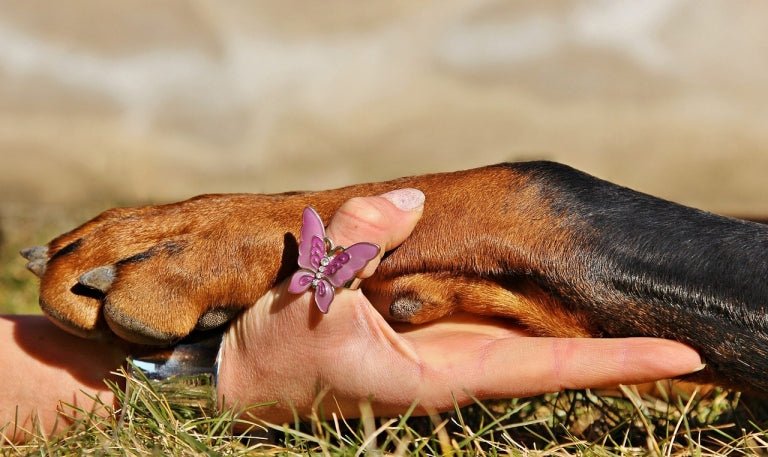Do you want to trim your dog's nails? “Oh my word, NO!!!!” That was her response when I a student in our Puppy Head Start class if she wanted help with nail trimming. Clearly she was terrified of the process. I asked her why. “My last dog used to fight so hard, we had to muzzle him and eventually had to resort to anaesthetizing him to get his nails trimmed. It was awful!”
We hear these and other similar stories all of the time in classes and it's all the more reason to work hard with your puppy to get them used to nail trimming. With a little bit of knowledge and practice, nail trimming can be a simple part of grooming. Remember that even if you don’t want to do the nail trimming yourself, your dog will have to be a part of the process, so it’s essential that they are comfortable with it.
For a healthy foot, nails should be trimmed short on a regular basis. Care should be taken to avoid trimming too close and nipping into the nail’s blood vessel (the “quick”). Also be aware that some dogs have dewclaws that will need trimming. If present, they will be on the insides of the lower leg (possibly front and back), though often, breeders will remove these at a few days old.
Here are the 4 steps we consider essential to creating a dog who is happy and calm when having their nails trimmed.
1 - Condition Your Dog to Be Calm & Still for Nail Trimming
This is crucial and not an overnight process. Dogs must be comfortable with having their nails trimmed, even if you don't do it yourself. Take the time to condition them to be calm and still and enjoy the process. Take a few minutes everyday to work on handling skills with your puppy. Part of that needs to be nails! We've outlined this in the first video below.
2 - Use High Value Rewards When Nail Trimming
Regardless of how green or how conditioned your dog may be to nail trimming, make sure you reward them well for being calm and agreeable to this scenario. Nail trimming should always be associated with your dog's favourite rewards - steak or cheese are usually a good rule of thumb, but use whatever your dog finds valuable. With a seasoned dog, I usually give one high value reward at the end of the whole job. With a youngster, I'll feed more frequently. Initially, I will give a reward for every nail trimmed. Later, I would feed for every foot finished and eventually, work yourself up to one reward for every nail trimming session, but every so often, an unexpected jackpot can really build your dog's desire to play this game.
3 - Trim Your Dog's Nails Frequently
The more often you clip, the shorter your dog's nails will get. The quick recedes slightly every time you trim close to it. At least once a week is a good goal for nail trimming.
4 - Trim Your Dog's Nails in Small Amounts
Keep your cuts small to ensure you don't cut into the quick. Shaving frequent, small amounts will help your confidence and it will help with your dog's overall foot health as well. By first trimming the length, then shaving bits off of the sides and the top, you'll help ensure your dog's nails are a healthy part of their lives. We've gone into great description on how to cut your dog's toenails in the second video at the end of this blog.
Whether you are starting with a young puppy or an older dog, a little practice, paired with some well-timed rewards, will help you and your dog overcome any stress about nail trimming.
With that in mind, we’ve prepared these videos to help you teach your dogs how to be comfortable with nail trimming!

